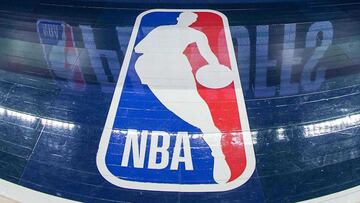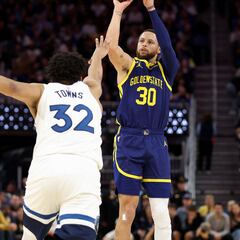The NBA Cup starts this year
The NBA and the Players Association sign the new collective agreement until 2030. Among other novelties, a mid-season cup tournament which will begin in November.

The suspense is over. At midnight in the United States, the deadline to sign the new NBA collective agreement ended. If an agreement was not reached, the ghost of lockout, a lockout that no one wanted, would have reared its head. But after extending the negotiation period for a few hours to finalize the last details, both parties, the NBA and National Basketball Players Association, have reached an agreement. Now the franchises and the players themselves have to vote for it to make it official, but nothing suggests that what was negotiated just a few hours ago by the representatives of both parties will not be ratified.
You might also enjoy
With a new, $1 billion television contract just around the corner, it was essential to secure social peace in the competition. The new agreement will be effective until 2030, although both parties can reach an agreement to get out of the agreement a year before, in 2029. The important thing is that the League will be calm for the rest of the decade as far as labor issues are concerned.
It was raining 3s in the Warriors W ☔
— NBA (@NBA) April 1, 2023
Steph: 33 PTS, 7 3PM
Klay: 31 PTS, 7 3PM
Poole: 27 PTS, 6 3PM pic.twitter.com/CoaQ60yDcJ
Cup competition and prize money
For fans surely the most striking news is the confirmation of a new, in-season tournament created along similar lines to the European Cup competitions. The first edition of the NBA Cup will take place in just a few months’ time, in November. Teams will be divided into groups, whose games will be part of the regular season. Eight of them will go on to play single-match qualifiers, ending with a Final Four to be played at a neutral venue. Las Vegas is right now the top candidate to host the inaugural edition. There will be economic prizes for the players and coaches of the winning team. The number being talked about is $500,000 each.
Another interesting point for the viewer concerns the prizes awarded at the end of the season. In an attempt to avoid unjustified breaks for stars, a new rule will be applied in which players will have to have played at least 65 regular season games to be eligible for any of the awards (MPV, best defender, etc... ) or to enter the All-NBA Team. For the players, this is important, since achieving any of these appointments has a positive influence when it comes to negotiating their salaries. It is hoped that the fan will also benefit from this measure as star players more incentive to miss fewer games.
An issue that was brought forward hours before there was an agreement and that has been a relative surprise is not eliminating the mandatory year of university before reaching the NBA. It looked like that rule was going to disappear and that the players would be able to reach the league at the age of 18. But for now 19 is maintained as the starting age for players beginning their careers in the best league in the world.
Jayson Tatum is the 1st player in NBA history to score at least 39 points in consecutive games without committing a turnover. pic.twitter.com/WTe9dbkcdp
— Taylor Snow (@taylorcsnow) April 1, 2023
Second salary cap
As for economic issues, there are two changes. On the one hand, that a second salary cap of $17.5 million is going to be set above the luxury tax. Teams that exceed it will not be eligible to sign players in free agency with the mid-level exception. It is a mechanism to curb the capacity of the teams that generally spend the most, such as the Golden State Warriors or the Los Angeles Clippers. Under this new situation, contracts like those of Donte DiVincenzo with the Warriors, Joe Ingles with the Bucks, Danilo Gallinari with the Celtics or John Wall with the Clippers could not have been signed. With this new norm it is expected that the teams that spend less will have more opportunities to sign players in free agency.
Book finds KD for the jam 🤝
— NBA (@NBA) April 1, 2023
Watch live on NBA TV
📺: https://t.co/WjxYAo0Ivs pic.twitter.com/oipO0pN2PG
Related stories
The other most important economic agreement is the one that affects the second and successive contract extensions of the league’s big stars. The limit above, which was until now at 120%, becomes 140%. Players like Jaylen Brown or Domantas Sabonis, who are about to sign new contracts, can benefit hugely from this rule. The former would be able go from earning $165 million to $189 million in four years and the latter, from $111 million to $121 million in the same period of time.
Lastly, the number of two-way players that the teams are allowed on their roster at the same time, rises from two to three. This figure, created in the previous agreement, in 2017, so that the teams could develop young players, and which has become an effective way to sign long-term contracts, is considered to have been a resounding success. Some good examples of this have been Alex Carusso and Austin Reaves (the Lakers), Duncan Robinson and Max Strus (Heat), Anthony Lamb (Warriors), Jose Alvarado (Pelicans) and Lu Dort (Thunder).


